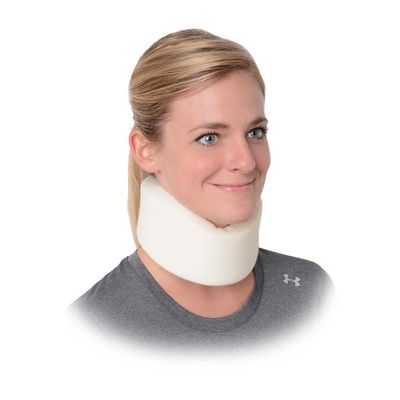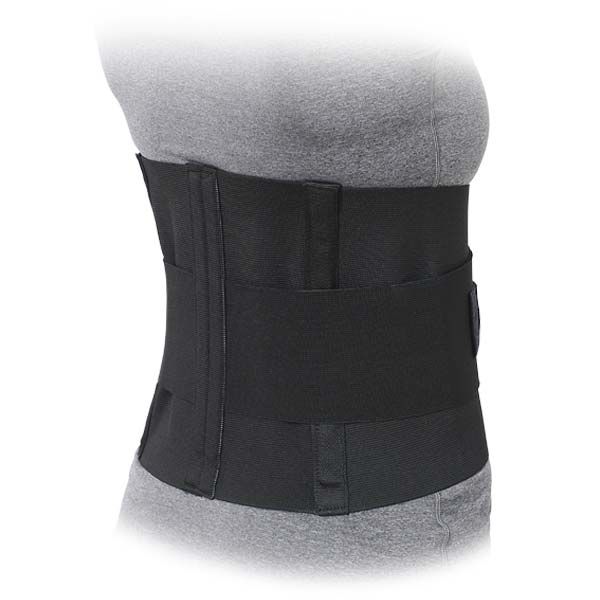Table of Contents
Injury Boot, Walking Boot / Low Top & High Top
An injury boot, often referred to as a medical boot or walking boot, is a type of orthopedic device used to immobilize the foot and ankle to promote healing after an injury. Here’s everything you need to know about injury boots:
What is an Injury Boot?
An injury boot is a protective, supportive device designed to stabilize the ankle, foot, or lower leg after an injury or surgery. These boots are commonly used to:
- Protect the foot and ankle during healing.
- Immobilize the injured area to prevent further damage.
- Help individuals maintain mobility while their injury heals.
Injury boots are most often prescribed by healthcare professionals after:
- Fractures (broken bones) in the foot, ankle, or lower leg.
- Severe sprains or ligament injuries.
- Achilles tendon injuries.
- Post-surgical recovery.
Key Features of an Injury Boot
- Hard Outer Shell: Provides structure and protection to the injured area.
- Soft Inner Padding: Offers comfort and helps prevent irritation or pressure sores.
- Velcro Straps: Allow for adjustable fitting to ensure that the boot is snug but not too tight.
- Rocking Sole: A rounded sole to simulate a normal walking motion, making it easier to move while wearing the boot.
- Optional Air Bladder: Some boots come with air bladders or pumps to adjust the pressure inside the boot, improving comfort and fit.
Types of Injury Boots
Short Walking Boot
- Used for injuries located in the foot, ankle, or lower part of the leg.
- Less cumbersome and lighter than a full boot, allowing for more flexibility in movement.
Tall Walking Boot
- Extends higher up the leg to provide extra support.
- Used for more severe injuries or fractures of the tibia, fibula, or higher ankle injuries.
Air Cast Boot
- Features an inflatable air bladder system to increase compression and fit.
- Helps to reduce swelling and provide a more customized level of support.
When is an Injury Boot Used
Fractures: If you break a bone in your foot, ankle, or lower leg, an injury boot is commonly prescribed. It helps keep the broken bone in the correct position to heal while allowing you to move.
Severe Sprains: For Grade 2 or Grade 3 sprains, where there’s ligament tearing or severe overstretching, the boot immobilizes the joint to allow proper healing.
Achilles Tendon Injuries: When the Achilles tendon is torn or injured, a boot can prevent excessive movement and provide support during recovery.
Post-Surgery: After surgeries like foot reconstruction, bunion removal, or ligament repairs, injury boots help protect the surgical site while enabling controlled mobility.
Benefits of an Injury Boot
- Mobility: Unlike traditional casts, an injury boot allows patients to walk while still protecting the injured area. This aids in a quicker return to normal activities.
- Adjustability: The straps, padding, and air bladders in some boots allow for easy adjustments depending on swelling or discomfort levels.
- Non-Invasive: While offering the support needed for healing, it is also removable, which means you can take it off for cleaning or adjustments as needed.
How to Wear an Injury Boot
Ensure Proper Fit: The boot should fit snugly but not cause discomfort or circulation issues. Adjust the straps and any inflatable parts accordingly.
Follow Medical Advice: Always follow your doctor’s instructions on how long to wear the boot each day and when it can be removed.
Use a Shoe Balancer: If you feel off-balance when walking with an injury boot, using a shoe balancer on the opposite foot can help equalize your stride and prevent further injury.
Wear Appropriate Socks: Always wear a sock underneath to prevent chafing and keep the boot clean. Make sure the sock is long enough to extend past the top of the boot.
Common Brands of Injury Boots
- Aircast: Known for its air bladder system, offering additional comfort and custom fit.
- Ossur: Offers a range of high-quality injury boots with built-in shock absorption and an ergonomic design.
- DonJoy: Popular for its lightweight and easy-to-wear designs, often with pneumatic features.
Walking in an Injury Boot
When using a walking boot, the design allows you to walk relatively normally, though it may feel awkward at first. The boot’s sole is usually curved to help simulate the natural heel-to-toe motion, but walking aids like crutches or a cane may be recommended initially to reduce pressure on the injured leg.
Considerations When Using an Injury Boot
- Avoid prolonged standing or walking without breaks, especially early in the healing process, as this can cause discomfort or slow down recovery.
- Check for signs of skin irritation, blisters, or swelling, and adjust the boot or consult your doctor if discomfort persists.
An injury boot is a valuable tool in promoting recovery while allowing you to maintain some degree of mobility. If you sell braces and splints, offering a range of injury boots for different needs and injuries could be a great addition to your product line.
Lumbar Sacral = Back Support W/ Side Pulls
A back support with side pulls is a type of orthopedic brace designed to provide stability, compression, and support to the lower back, particularly in cases of lower back pain, injury, or strain. The addition of side pulls allows for adjustable compression and increased support, helping to alleviate pain and promote proper posture.
Key Features of a Back Support with Side Pulls
Adjustable Side Pulls
- Side pulls are adjustable straps or laces that allow users to tighten or loosen the brace as needed. This feature provides customizable compression and support to the lower back, enhancing comfort and effectiveness.
- The side pulls allow for easy adjustments throughout the day, accommodating changes in comfort level or activity.
Lumbar Support
- The brace is designed to target the lumbar region (lower back), providing support to the spine and surrounding muscles. This can help reduce stress on the back and prevent further injury.
Compression
- The compression provided by the brace helps reduce swelling and inflammation, which can lead to pain relief. Compression also promotes better posture and can improve muscle engagement in the lower back.
Breathable Material
- Many back supports with side pulls are made from breathable, moisture-wicking materials to ensure comfort during extended use. This helps reduce heat buildup and prevents skin irritation.
Ergonomic Design
- Designed to fit the natural curves of the back, the support is contoured to provide a snug and comfortable fit. The side pulls enable adjustments to fit a variety of body shapes and sizes.
Velcro or Hook-and-Loop Fastening
- The brace is usually secured with Velcro or hook-and-loop fasteners, allowing users to easily adjust the tightness for optimal support.
Uses of a Back Support with Side Pulls
Lower Back Pain Relief
- Ideal for people suffering from lower back pain due to muscle strain, overuse, or conditions like sciatica or herniated discs. The side pulls provide extra support to stabilize the lower back and alleviate pain.
Posture Improvement
- Helps correct poor posture by providing lumbar support and encouraging a more upright position. This can be particularly helpful for individuals who spend long hours sitting or standing in improper positions.
Injury Prevention
- Used by athletes, manual laborers, or individuals who perform heavy lifting to prevent lower back injuries. The brace adds extra stability to the spine and reduces the risk of strain or injury.
Post-Surgical Support
- Provides stability and reduces strain on the lower back following surgery or injury, promoting a faster recovery and preventing reinjury.
Chronic Back Conditions
- Beneficial for individuals with chronic back conditions such as degenerative disc disease, osteoarthritis, or lumbar stenosis. The adjustable side pulls allow for consistent support based on the level of discomfort.
Benefits of Back Support with Side Pulls
- Customizable Compression: The adjustable side pulls enable the user to tighten or loosen the brace, providing the right amount of compression based on activity level or pain.
- Improved Stability: By stabilizing the lower back and promoting proper posture, the brace helps reduce strain on the spine and surrounding muscles.
- Pain Relief: Compression and support can alleviate pain caused by injury, muscle strain, or chronic back conditions.
- Enhanced Mobility: Many users find that the brace allows them to continue daily activities with less pain, while still supporting their back.
How to Use a Back Support with Side Pulls
- Position the Brace: Center the back support over your lower back (lumbar region), ensuring it is sitting comfortably.
- Fasten the Brace: Secure the front closure (typically Velcro) around your abdomen. The brace should fit snugly but not too tight to restrict breathing or movement.
- Adjust Side Pulls: Tighten or loosen the side pulls as needed to customize the level of compression and support. Make sure the brace feels secure and provides adequate support without causing discomfort.
- Wear During Activity: Use the back support during activities that may strain your lower back, such as lifting, bending, or prolonged sitting/standing. You can also wear it during exercise if advised by a healthcare provider.
- Do Not Overuse: While a back support can be helpful for pain relief and injury prevention, it’s important not to become overly reliant on the brace. Overuse can lead to weakened back muscles. Gradually work on strengthening your back through physical therapy or exercises.
Care and Maintenance
- Follow the manufacturer’s instructions for cleaning and maintaining the back support. Most are hand-washable or machine-washable in a gentle cycle.
- Ensure that the brace is fully dry before wearing it again to prevent skin irritation or damage to the materials.
A back support with side pulls can be an effective tool for managing back pain, supporting posture, and preventing injury. It’s ideal for those with lower back issues who need adjustable support for varying levels of activity and comfort.
ORDER NUMBER: 501-W, 503-W, 505-W, 507-W, 507-W, 508-W, 509-W, 510-W, 511-W, 512-W
501-B, 503-B, 505-B, 507-B, 508-B, 509-B, 510-B, 511-B, 512-B
SIZE: X-Small thru 5X Large (see sizing chart to the left)
PRODUCT HIGHLIGHTS:
• Form-fitting 10" all-elastic with double pull side panels for additional support
• High quality Velcro™ closure for durability
• Four flexible stays in back panel for excellent support
INDICATIONS:
Ideal for providing support and compression for strains and sprains of the lower back.
SUGGESTED HCPC: L0625
Categories: Cervical, Spine & Abdominal




